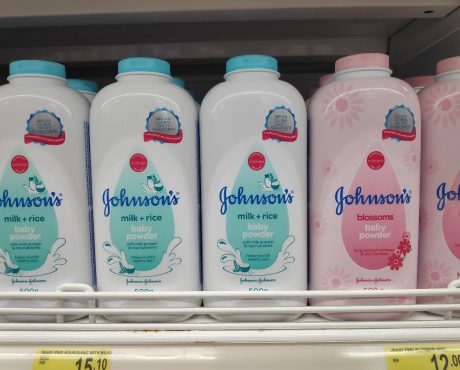JNJ Stock Is a Dividend King
Quality items seldom go on sale, but that’s when we talk about a normal market. In a stock market that recently had its worst day since 1987, even the established blue-chip companies are now trading at much lower prices than before.
In other words, it could be an opportunity to pick up some solid stocks on the cheap. And for income investors, the inverse relationship between dividend yield and stock price means, with the market sell-off, many stocks are yielding higher than before.
That’s why it’s a good idea to check out Johnson & Johnson (NYSE:JNJ).
If you are a long-time dividend investor, Johnson & Johnson stock will need no introduction. The company has raised its dividend every year for the past 57 years, meaning it is a Dividend King, which is a title given only to companies with at least 50 consecutive years of annual dividend increases. Among the thousands of companies that trade on U.S. stock exchanges, only 30 hold that title. (Source: “Dividend History,” Johnson & Johnson, last accessed March 23, 2020.)
Given the company’s business, its dividend growth track record shouldn’t really come as a surprise.
Johnson & Johnson has been around since 1886. Today it is a multinational corporation with a strong global position in three key operating segments: “Consumer,” “Pharmaceutical,” and “Medical Devices.” JNJ has more than 260 operating companies located in more than 60 countries, selling products in virtually all countries around the world.
Notably, many of Johnson & Johnson’s brands, such as “Johnson’s Baby,” “Aveeno,” “Band-Aid,” and “Tylenol,” have become household names.
The neat thing is that the demand for JNJ’s products is relatively inelastic to how the overall economy is doing, meaning the company can still run a solid business during recessionary periods. Looking back, we see that the company has grown its adjusted operational earnings for 36 consecutive years. (Source: “Full Year 2019 Results,” Johnson & Johnson, January 22, 2020.)
By running a recession-proof business, Johnson & Johnson is well positioned to return cash to investors through thick and thin. And even though the company has been growing its dividends for over half a century, it has no problem covering its payout.
Johnson & Johnson Pays Rock-Solid Dividends
In 2019, Johnson & Johnson generated $82.1 billion of revenue, representing a 0.6% increase from 2018. Excluding the net impact of exchange rate fluctuations, acquisitions, and divestitures, the company’s adjusted operational sales grew 4.5% for the year. (Source: “Johnson & Johnson Reports 2019 Fourth-Quarter and Full Year Results,” Johnson & Johnson, January 22, 2020.)
Growth was across the board in 2019. Adjusted operational sales increased 1.4% in the Consumer segment, 5.8% in the Pharmaceutical segment, and 3.9% in the Medical Devices segment. As a global company, Johnson & Johnson’s products have been selling well around the world. In 2019, the company’s international adjusted operational sales grew 4.1%, while its U.S. adjusted operational sales also edged up 2.7%.
Top-line growth translated to the bottom line. Johnson & Johnson’s adjusted earnings came in at $8.68 per share in full-year 2019, up 6.1% from the prior year. Considering that the company declared and paid four quarterly dividends totaling $3.75 per share to JNJ stock investors during the year, it achieved a payout ratio of 43%.
So, despite all the dividend hikes over the decades, Johnson & Johnson was paying out less than half of its adjusted profits last year.
The best part is, the company plans to deliver even better numbers going forward. For full-year 2020, management expects Johnson & Johnson’s adjusted operational sales to grow by another five to six percent. They also expect the company to earn adjusted net income of $8.95 to $9.10 per share in 2020, which would translate to a 3.1% to 4.8% increase from 2019.
With a growing business and a conservative payout ratio, it’s safe to say that more dividend hikes are likely on the way for Johnson & Johnson stock.
JNJ Stock: Not a Hot Commodity at the Moment
Of course, as I mentioned earlier, the stock market has been experiencing a major sell-off, and even the most solid companies have seen their share prices tumble. Over the past month Johnson & Johnson stock has fallen about 25%.
The main reason behind the market downturn is the coronavirus outbreak. Due to the spread of the virus, economists are predicting a global recession. (Source: “Economists See Rising Risks of Recession World-Wide,” The Wall Street Journal, March 12, 2020.)
A lot of industries are going be impacted by the coronavirus outbreak, but as a healthcare and consumer goods giant, Johnson & Johnson might survive the downturn in better shape than most other companies.
In fact, JNJ recently said that, under the current coronavirus situation, most of the company’s global medical device manufacturing “is running at or near normal capacity,” and it does not foresee supply interruptions to its pharmaceutical segment at this time. In the consumer segment, JNJ is actually experiencing higher demand for certain products and markets. The company says it is currently meeting the increased demand in a “controlled manner” and will take all possible measures to maximize its product availability. (Source: “Johnson & Johnson Business Continuity Statement (3/13),” Johnson & Johnson, last accessed March 23, 2020.)
“We have robust business continuity plans in place across our global supply chain network to prepare for unforeseen events and to meet the needs of the patients, customers and consumers who depend on our products. These steps include maintaining critical inventory at major distribution centers away from high-risk areas and working with external suppliers to support our preparedness plans,” said the company. (Source: Ibid.)
Bottom Line on Johnson & Johnson
At the end of the day, keep in mind that the pullback in the JNJ stock price has boosted its yield to 3.3%.
And due to the company’s dividend growth potential, investors who purchase Johnson & Johnson stock will likely collect higher yield on cost in the years to come.
